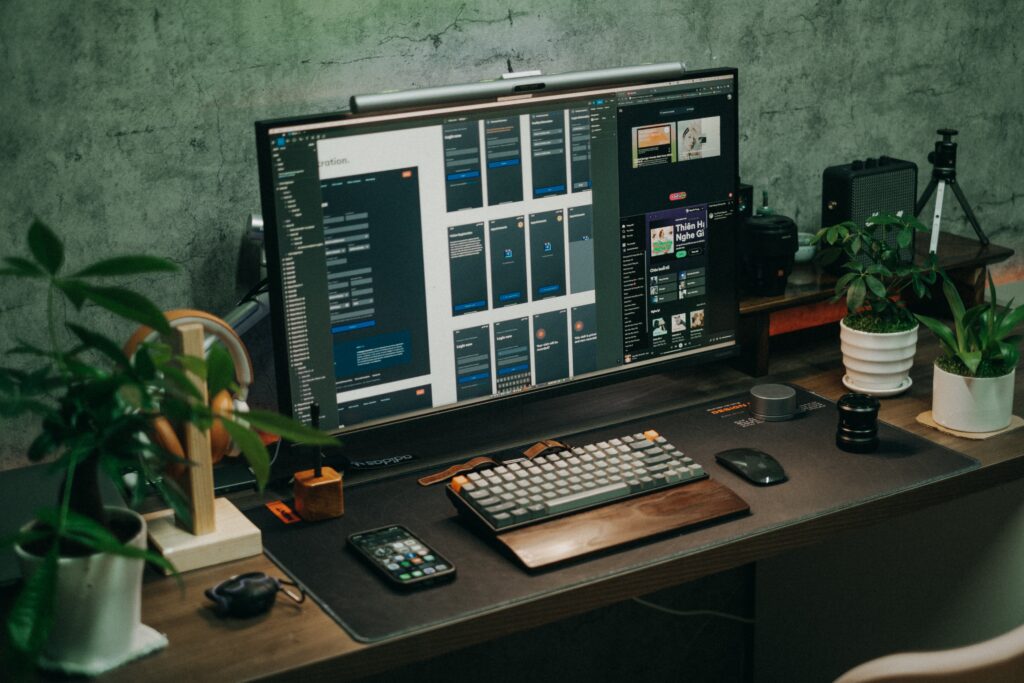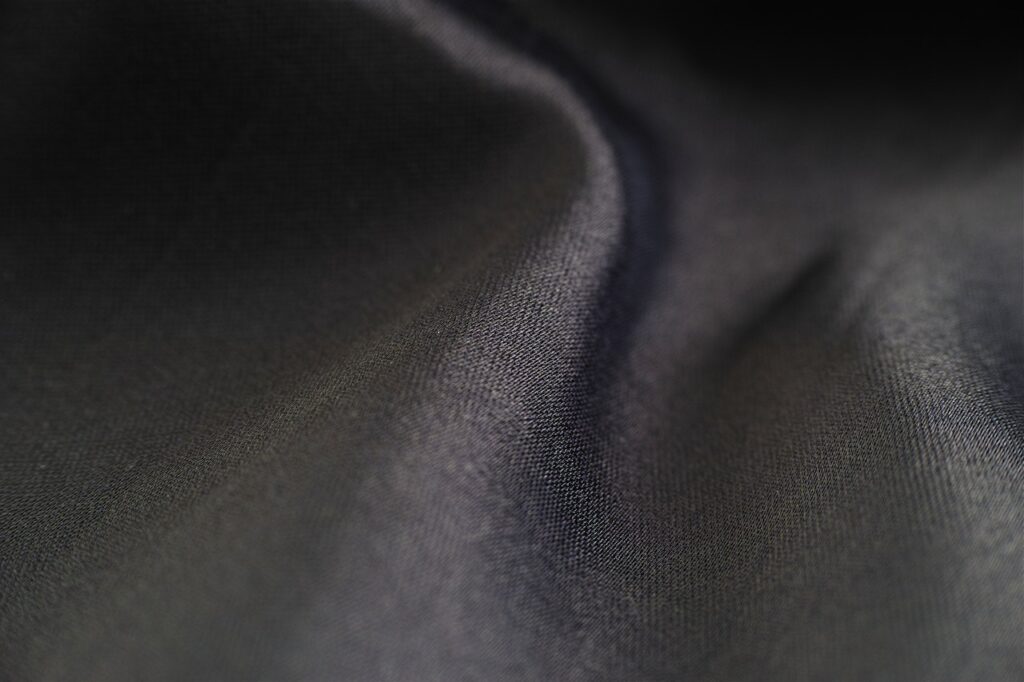
The Importance of Picking the Right Mouse Pad
When it comes to using a computer, most people focus on the main components such as the monitor, keyboard, and mouse. However, one important element of a comfortable and efficient computing experience that is often overlooked is the humble mouse pad. A good quality mouse pad can enhance your overall productivity by providing an accurate and smooth surface for your mouse.
It also helps to reduce wrist strain and fatigue during prolonged use. The right mouse pad can make all the difference in your computer use experience.
A well-designed mouse pad can improve tracking accuracy, reduce friction between your mouse and the surface it’s on, and minimize wrist strain from repetitive movements required for cursor control. To fully appreciate how critical it is to choose the right mouse pad for you, let’s examine some of its benefits in further detail.
One of the primary reasons why you need a good quality mouse pad is to achieve better tracking accuracy. Without a proper surface on which to move your computer’s pointer device, it may be difficult to keep up with fast cursor movements or precise targeting requirements common in many programs or games.
A high-quality mouse pad will provide a uniform surface that ensures optimal sensor performance with minimal jitter or inconsistencies. It should also enable you to adjust your cursor speed accurately as per your needs while maintaining accuracy at all times.
Reduced Friction
Another benefit of using a well-designed mouse pad is that it can help reduce friction between your device and its underlying surface. With less resistance from any rough spots or bumps present on other surfaces, like bare desks or tabletops, users may find they have more fluid control over their cursors while reducing hand fatigue over time.
Furthermore, when used regularly over long periods of time without proper cushions or protection underneath them (e.g., rubber feet), desktop materials may scratch easily due to prolonged exposure to mouse use. By using a mouse pad, you can protect your surfaces from damage caused by friction and wear.
Ergonomic Support
A good quality mouse pad can provide ergonomic support for your wrist while working or playing games for extended periods. By providing cushioning between the surface and your wrist, a well-designed pad can help alleviate strain and discomfort that may otherwise occur.
This is particularly important because many computer users spend extended periods of time each day using their computer’s pointing device. If left unaddressed, this strain can lead to issues like carpal tunnel syndrome or other repetitive stress injuries.
Choosing the right mouse pad is essential to maximizing comfort and productivity during extended computer use sessions. It provides improved accuracy, reduced friction with underlying surfaces, and ergonomic support for your wrists – all factors that make a significant difference in long-term usability without causing stress-related injuries or discomfort.
Consider Your Needs

Size, Material, and Design: The Big Three
When selecting a mouse pad, there are three main factors to consider: size, material, and design. These elements can have a significant impact on the performance and comfort of your computer use.
Let’s take a closer look at each factor. Firstly, size is crucial.
Choosing the right size mouse pad will not only enhance your productivity but also reduce physical strain. Consider how much desk space you have available and choose a mouse pad that fits comfortably within your workspace.
If you find yourself frequently lifting and repositioning your mouse while working or gaming, it may be time to upgrade to a larger size. The second factor is material.
Mouse pads can be constructed from various materials such as cloth, plastic, metal or hybrid options that combine two or more materials. Each material has its pros and cons in terms of durability, cost-effectiveness, tracking accuracy and comfort during extended use.
Design elements such as texture, thickness and surface friction should also be taken into account when choosing a mouse pad. These factors can affect how the mouse moves on the pad which may suit different users differently based on personal preferences.
Your Needs Come First
It’s important to remember that everyone has their own unique needs when it comes to choosing a mouse pad that will work best for them. Consider factors like your primary use for the computer – are you a gamer who needs precision movement?
Or perhaps you’re an artist who requires high-level sensitivity? Do you prefer soft or hard surfaces?
All of these preferences should guide your decision-making process. Additionally think about physical factors such as wrist pain or carpal tunnel syndrome – ergonomically designed pads could help alleviate any discomforts while working long hours.
one should take into account all his/her requirements before buying a new mat because it’s not a one-size-fits-all solution. A good mouse pad can provide a significant boost your productivity and comfort, but only if it’s tailored to your specific needs.
Size Matters
Optimizing Your Workspace and Sensitivity
When it comes to choosing a mouse pad, size is a crucial factor. A mouse pad that is too small can hinder your ability to move the mouse accurately, while a pad that is too large can be cumbersome and take up valuable desk space. The right size for you will depend on your workspace and preferred level of sensitivity.
If you have limited desk space or prefer using a laptop, a smaller mouse pad may be the right choice. Compact mouse pads typically measure around 8 x 10 inches and are ideal for those who use their computer primarily for web browsing or productivity tasks.
They are also suitable for individuals who prefer high sensitivity settings and need less surface area to move their cursor. For those who require more room to work or play games, larger mouse pads may be necessary.
A standard-size rectangular mouse pad measures approximately 9 x 11 inches and provides ample space for most users. If you frequently play games or work on graphic design projects, an extended rectangular mouse pad measuring up to 36 inches in length may offer the extra room you need.
Making Suggestions Based on Common Usage Scenarios
In addition to considering your workspace and sensitivity preferences, common usage scenarios can also help guide your choice of a suitable size of the mouse pad. For instance:
– Gamers: Most gamers require more space compared to other computer users due to low sensitivity settings they prefer while playing games. Gaming-specific extended pads usually range between two-to-three feet in length depending on individual needs.
– Graphic designers: Graphic designers tend to work with high precision movements and prefer medium-sized pads that allow them sufficient maneuvering room. – Office workers: Office workers usually use compact-sized pads as they require less space than graphic designers and gamers.
Ultimately, selecting the right size of the mouse pad is all about finding the balance between your workspace and sensitivity needs and common usage scenarios. By taking these factors into account, you can ensure that you have a comfortable and efficient mouse pad that meets your specific requirements.
Material Matters Too

Choosing the Right Material for a Comfortable Experience
Choosing the right material for your mouse pad is crucial as it can affect the level of comfort you experience during extended use. The most common materials used in mouse pads are cloth, plastic, metal and hybrid options.
Each has its own set of advantages and disadvantages that can impact your gaming or work experience. A cloth mouse pad is probably the most widely used because it is affordable and provides good surface friction for better control over your cursor.
These pads are also more comfortable to use than plastic or metal alternatives, which can cause hand fatigue after extended periods of use. One downside to cloth pads is that they tend to wear out faster than other materials.
Plastic mouse pads provide a smooth surface that allows your mouse to glide effortlessly over it, making them ideal for fast-paced gaming where quick movements are required. However, some may find these types of pads uncomfortable as they tend to be thinner and harder than cloth options.
The Pros and Cons of Different Materials
Metal mouse pads are known for their durability and sturdiness, making them ideal for users who want something that will last a long time. They also offer a sleek appearance that many find attractive; however, they can be loud when you move your mouse across them.
Metal options also tend to be among the most expensive types of mouse pads. Hybrid materials combine different elements from each material type to create something unique.
For example, some hybrid pads have a hard surface at the bottom with a softer top layer made from cloth or foam rubber. This provides precision while working or gaming without sacrificing comfort.
Choosing the right material depends on several factors such as personal preference, budget and intended usage scenarios. Ultimately, selecting one with adequate frictional properties while being comfortable during extended use should be considered when trying out different materials.
Design Considerations
When it comes to designing a mouse pad, there are many elements that can impact its effectiveness. One of the most important aspects to consider is texture.
A textured surface provides more friction than a smoother one, making it easier for the mouse to grip the surface and move precisely. This makes textured surfaces ideal for gamers or anyone who requires precise movement in their work.
The thickness of a mouse pad can also play a role in its design effectiveness. Ideally, you should select a pad that has enough thickness to make sure that neither your wrist nor your forearm touch the desk while using it.
This can help prevent wrist strain and other discomforts associated with extended computer use. Surface friction is yet another design consideration when selecting a mouse pad.
The level of surface friction determines how easily the mouse moves across the surface – too much friction will make it difficult to move smoothly, while too little may cause overcorrections or missed movements. For heavy users such as gamers, low-friction pads are often preferred as they allow for quick and easy movement with minimal resistance.
Suggestions based on User Preferences
Gamers in particular may prefer specialized gaming mouse pads which often feature highly-textured surfaces designed for precision movement and low-friction materials ideal for fast response time and frequent sweeping motions across the screen. For graphic designers who frequently use high-precision software such as Photoshop or Illustrator, thicker pads with smooth surfaces are often recommended as they offer enhanced control over small and delicate movements.
If you’re prone to arm and wrist fatigue during extended periods of computer use, ergonomic designs may be right for you – these feature an angled design that helps keep your arm straight during use reducing strain on muscles that would otherwise remain tense when using traditional flat-surfaced pads available on most desktops today.
Ultimately, the right mouse pad is one that aligns with your specific needs and preferences. By taking into account the design elements discussed here, you can ensure that you find a product that suits your usage requirements and enhances your overall performance while minimizing discomfort and risk of injury.
Specialized Options
The Benefits of Ergonomic Mouse Pads
Ergonomic mouse pads are designed to provide additional support and comfort to your wrist and arm while using a computer mouse. They are constructed with materials that alleviate pressure points and reduce the risk of repetitive strain injuries such as carpal tunnel syndrome. The benefits of using an ergonomic mouse pad include reducing muscle fatigue, improving posture, and reducing the risk of developing chronic pain.
These types of mouse pads come in different shapes and sizes, but most feature a raised wrist rest that keeps the wrist in a neutral position while using the mouse. However, there are some potential drawbacks to consider when selecting an ergonomic mouse pad.
Some models may be too large or bulky for some workspaces or may not fit well with certain types of mice. Additionally, because they offer specialized features, they may be more expensive than standard models.
The Advantages of Gaming Mouse Pads
Gaming-specific mouse pads are designed to provide gamers with additional benefits beyond standard models. They feature surfaces that offer enhanced tracking accuracy and precision movements that can help competitive gamers gain an edge over their opponents. Gaming pads also come in a variety of sizes to meet different gaming styles.
Large pads allow gamers to make sweeping movements while tracking enemies onscreen, while smaller ones provide faster response times for those who prefer twitch-style gameplay. However, gaming-specific pads can have disadvantages as well.
Maintenance Tips
Keep it Clean
One of the most important considerations when it comes to maintaining your mouse pad is keeping it clean. Over time, sweat, oils, and dirt can build up on the surface of your mouse pad which can impact its tracking accuracy and overall performance.
To avoid this problem, simply wipe down your mouse pad with a damp cloth at least once a week. If you’re dealing with tougher stains or buildup, consider using a cleaning solution or cleaning wipes designed specifically for computer peripherals.
Rotate Regularly
Another easy way to keep your mouse pad in top condition is to rotate it regularly. Most people tend to use their computer in the same spot every day which means their mouse pad gets worn down in that one area over time. By rotating your mouse pad frequently (say every two weeks or so), you will help distribute wear more evenly across the entire surface of the pad.
Store Properly
When not in use, make sure to store your mouse pad properly. Avoid leaving it lying around on your desk where it can pick up dust or get accidentally knocked onto the floor where it may become damaged. Instead, consider investing in a storage container designed specifically for computer peripherals like mice and keyboard so that you can easily keep everything organized and protected when not in use.
Conclusion
Choosing the right mouse pad can make all the difference when it comes to optimizing performance and comfort during computer use. By considering factors such as size, material, design elements such as texture and thickness as well as specialized options like ergonomic or gaming-specific models can go a long way toward ensuring that you get exactly what you need out of this often-overlooked peripheral.
By following these simple maintenance tips – keeping your mousepad clean with regular rotation and proper storage – you can extend its lifespan and keep it performing at its best for years to come. Whether you’re a casual user or an avid gamer, choosing and maintaining the right mouse pad is key to achieving maximum productivity and enjoyment from your computer experience.
